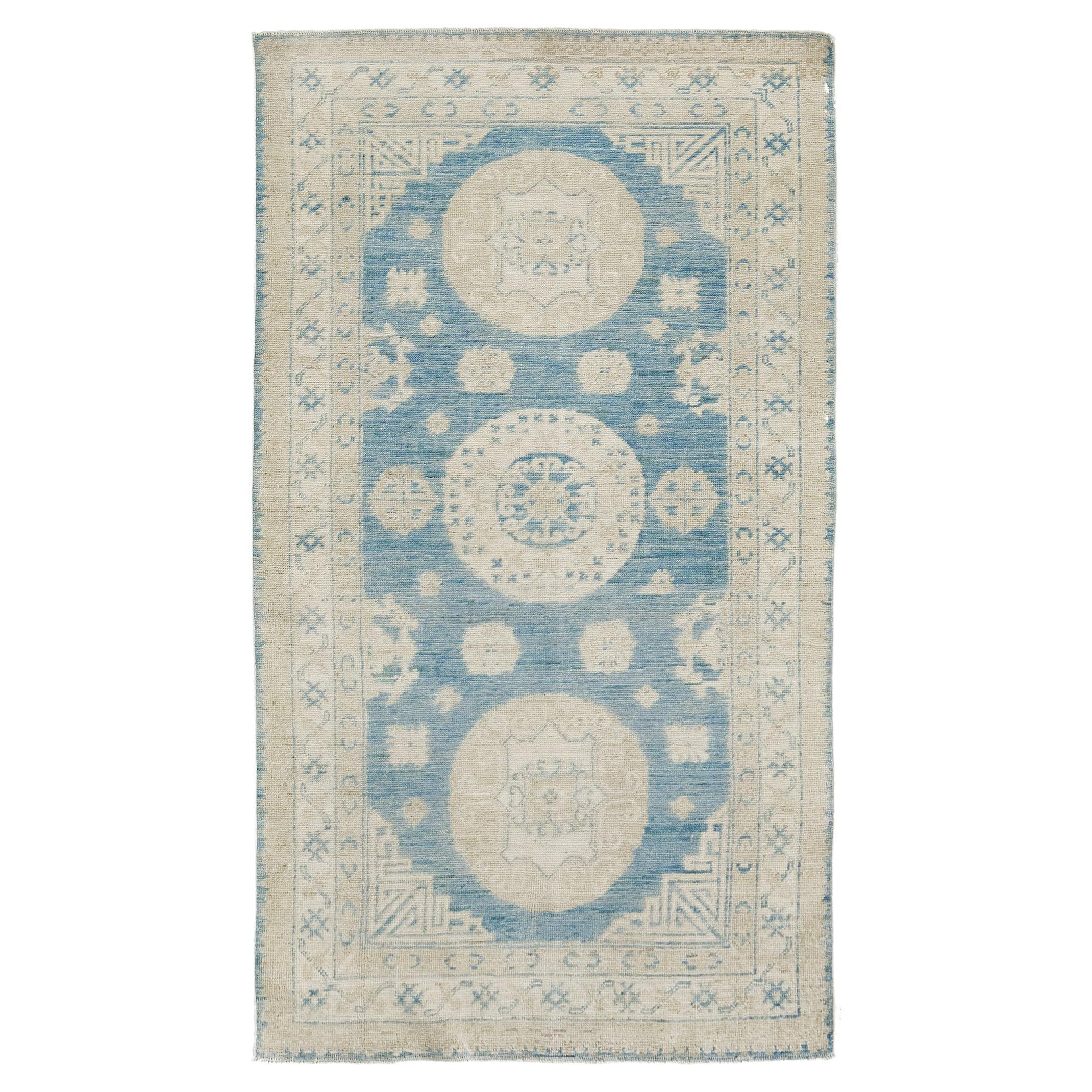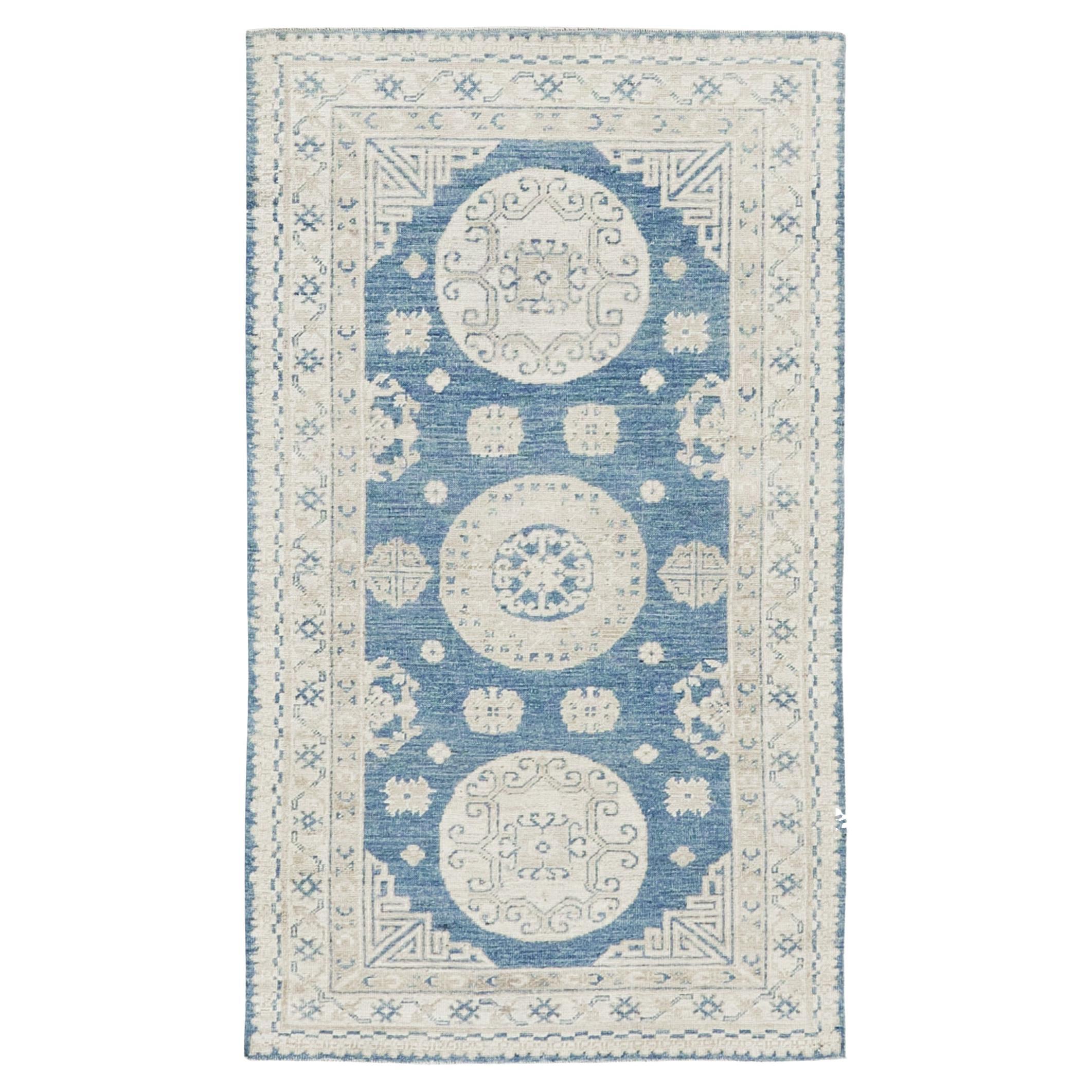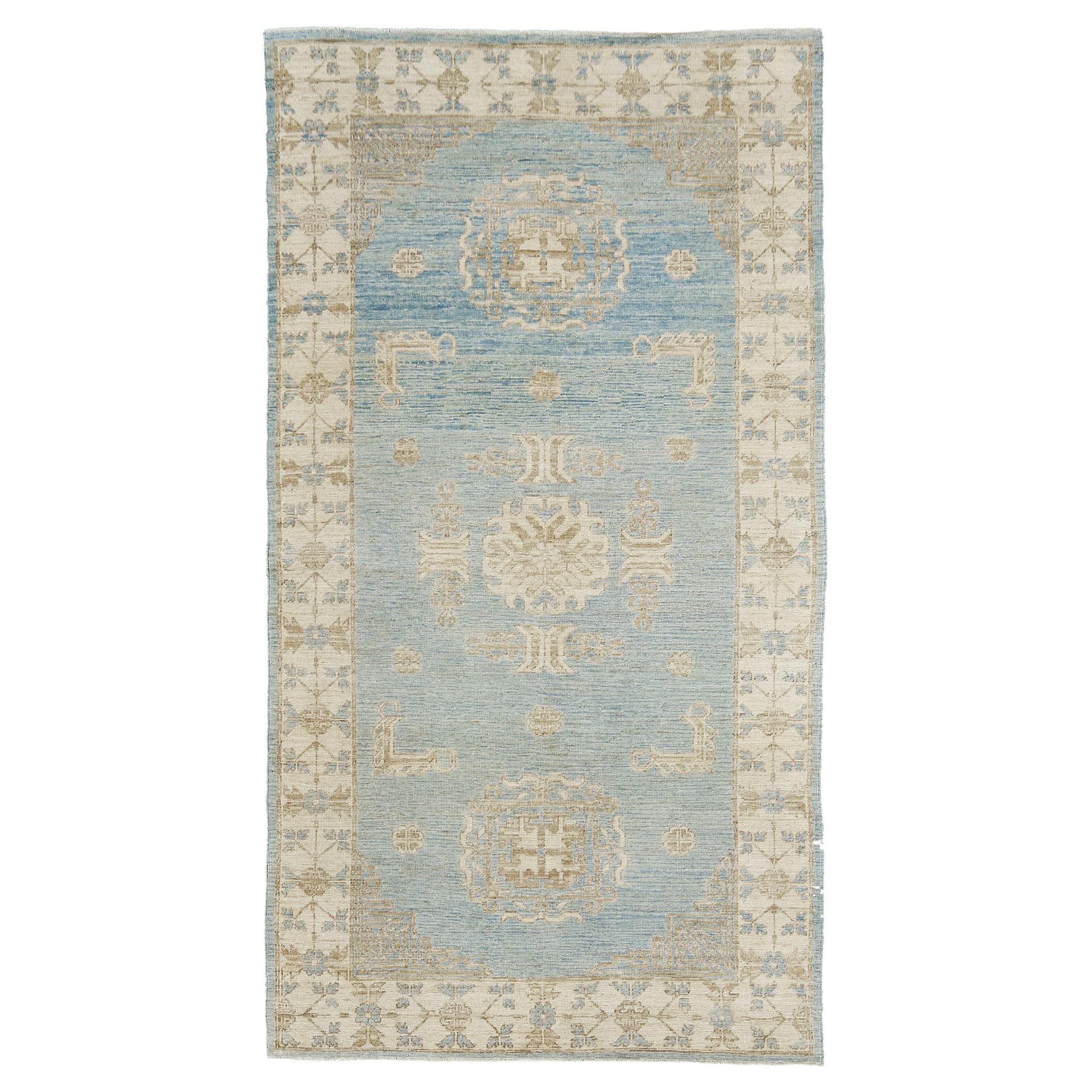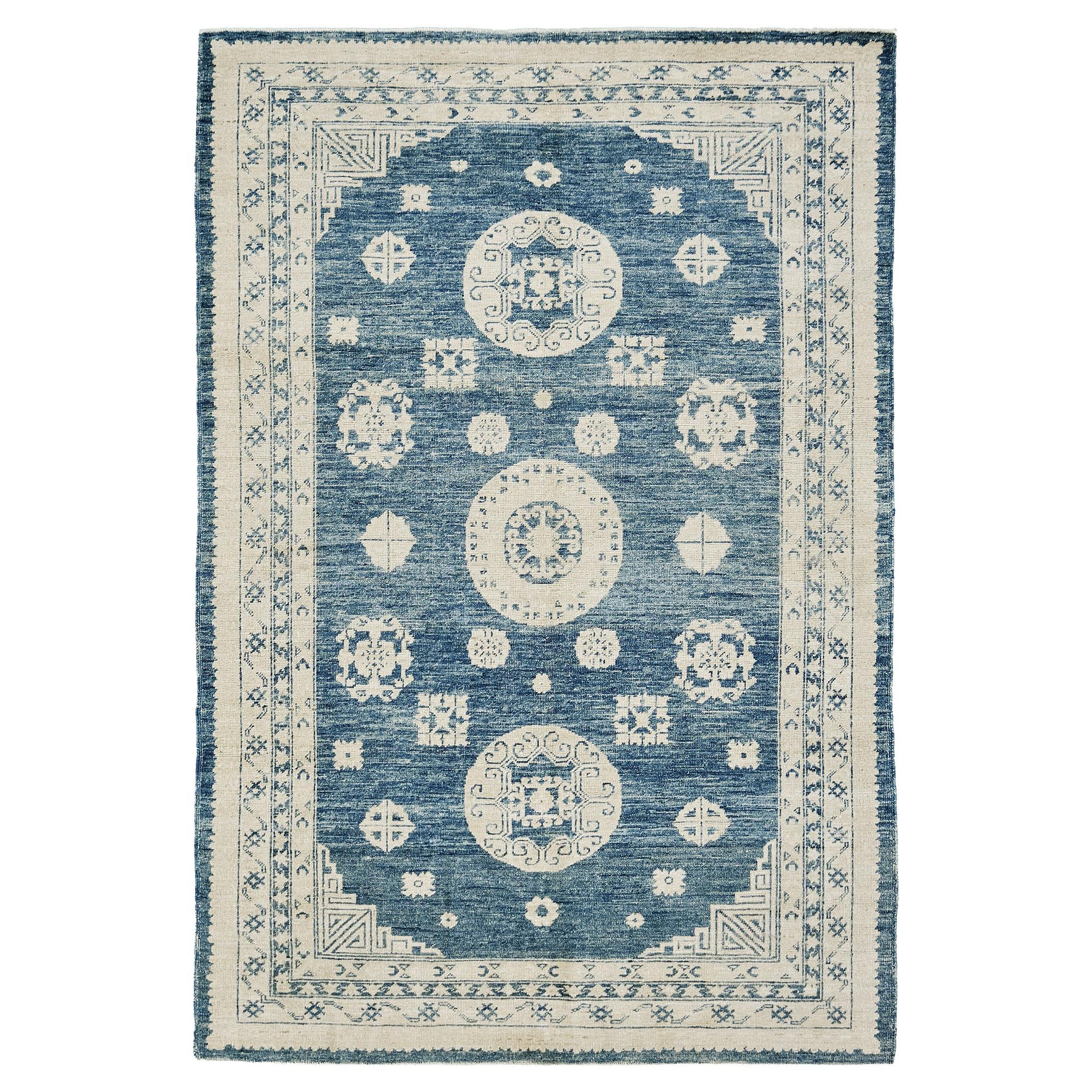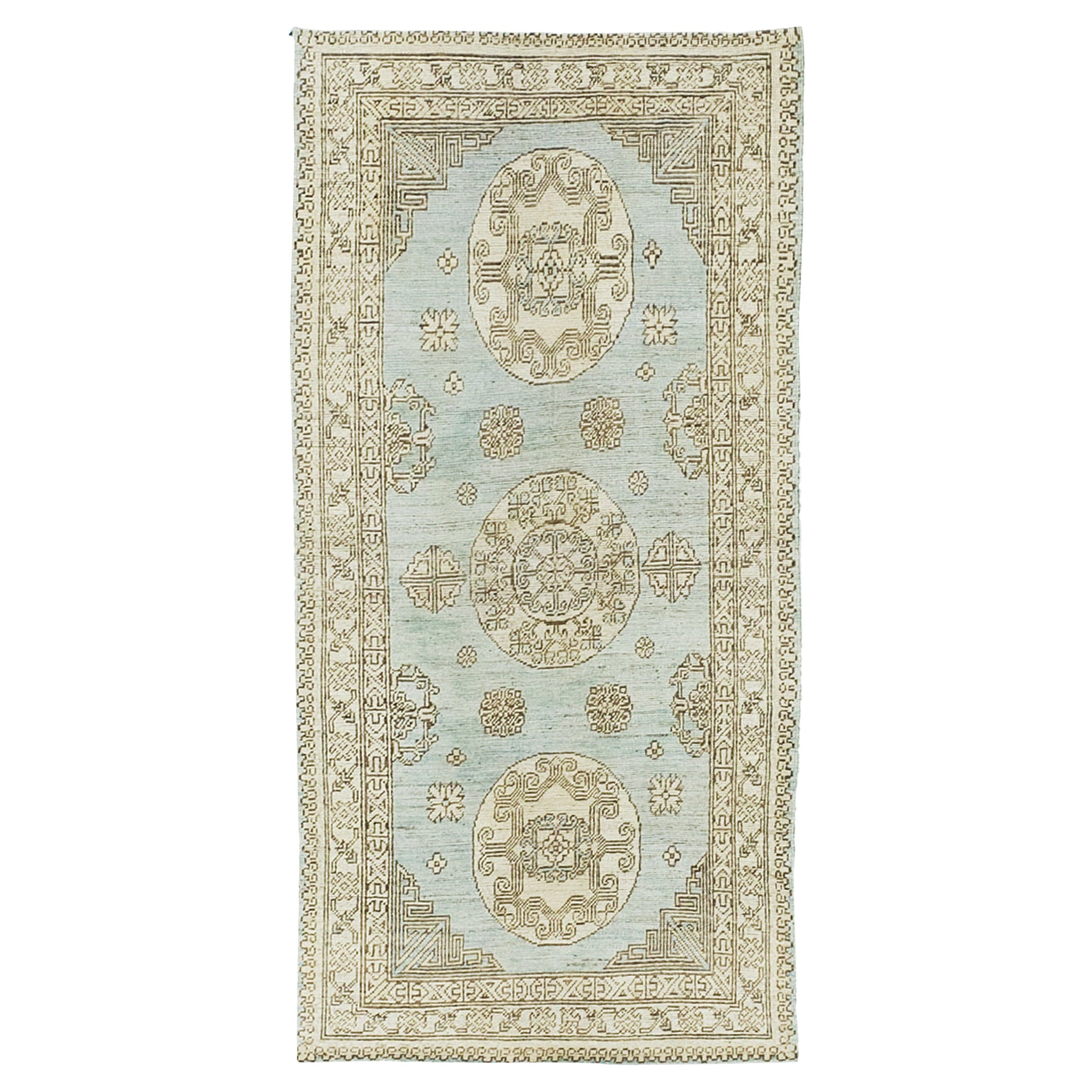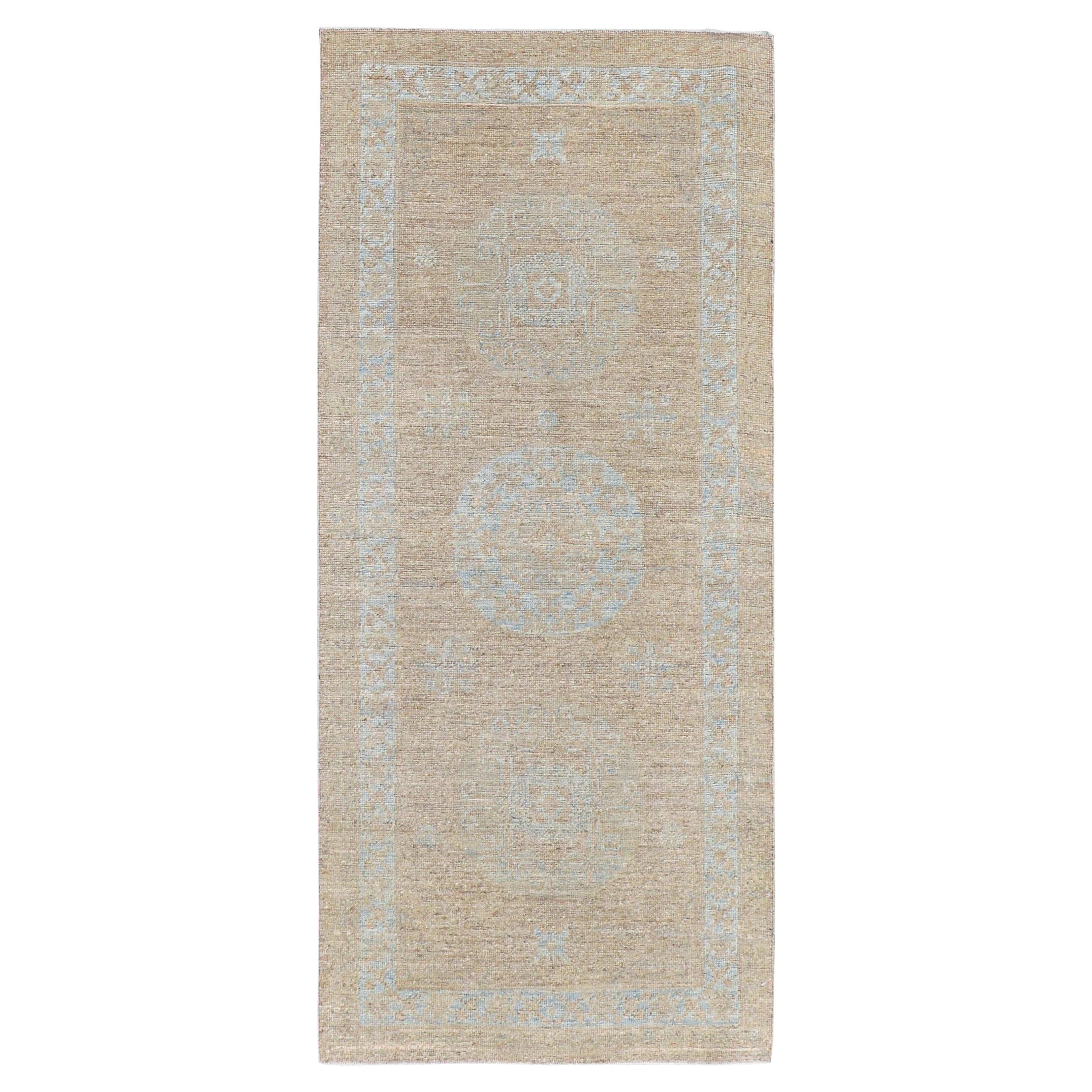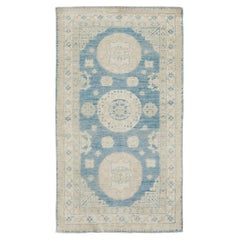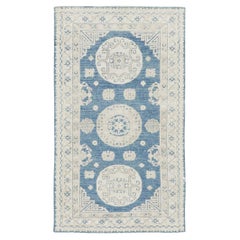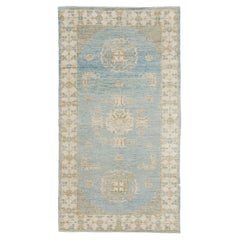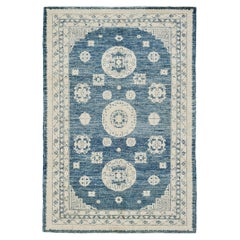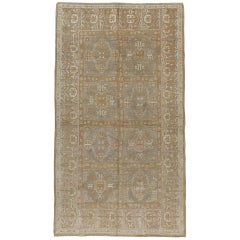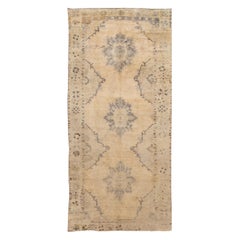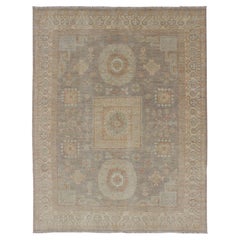Items Similar to Mehraban 18th Century Khotan Design Revival Runner D5387 Safira
Want more images or videos?
Request additional images or videos from the seller
1 of 6
Mehraban 18th Century Khotan Design Revival Runner D5387 Safira
$1,800
£1,384.68
€1,607.22
CA$2,538.43
A$2,843.47
CHF 1,493.49
MX$34,575.66
NOK 18,912.49
SEK 17,953.04
DKK 11,995.30
About the Item
A stunning masterpiece from our Safira Collection has amazing natural tones that complement the coolest blue of the glamourous elements and scrolls. It creates a soulful balance of everything from modern decor to contemporary design.
Rug Number
25531
Size
3' 1" x 5' 9"
Design
D5387
Collection
Muted Re-Creations
Material
Wool
Texture
Pile Weave
Origin
Afghanistan
Age
New.
- Creator:Mehraban Rugs (Designer)
- Dimensions:Width: 37 in (93.98 cm)Length: 69 in (175.26 cm)
- Materials and Techniques:Wool,Hand-Knotted
- Place of Origin:
- Period:
- Date of Manufacture:2010
- Production Type:New & Custom(Current Production)
- Estimated Production Time:Available Now
- Condition:
- Seller Location:WEST HOLLYWOOD, CA
- Reference Number:Seller: 255311stDibs: LU5100232621552
About the Seller
5.0
Gold Seller
Premium sellers maintaining a 4.3+ rating and 24-hour response times
Established in 1945
1stDibs seller since 2019
180 sales on 1stDibs
Typical response time: <1 hour
- ShippingRetrieving quote...Shipping from: WEST HOLLYWOOD, CA
- Return Policy
Authenticity Guarantee
In the unlikely event there’s an issue with an item’s authenticity, contact us within 1 year for a full refund. DetailsMoney-Back Guarantee
If your item is not as described, is damaged in transit, or does not arrive, contact us within 7 days for a full refund. Details24-Hour Cancellation
You have a 24-hour grace period in which to reconsider your purchase, with no questions asked.Vetted Professional Sellers
Our world-class sellers must adhere to strict standards for service and quality, maintaining the integrity of our listings.Price-Match Guarantee
If you find that a seller listed the same item for a lower price elsewhere, we’ll match it.Trusted Global Delivery
Our best-in-class carrier network provides specialized shipping options worldwide, including custom delivery.More From This Seller
View AllMehraban 18th Century Khotan Design Revival D5387 Safira
By Mehraban Rugs
Located in WEST HOLLYWOOD, CA
A majestic stylish Khotan revival rug that features a series of symbollical medallions spread across the cobalt field. Glorious ornate eye motifs enclose thi...
Category
2010s Afghan Central Asian Rugs
Materials
Wool
Mehraban 18th Century Khotan Design Revival D5387 Safira
By Mehraban Rugs
Located in WEST HOLLYWOOD, CA
This impressive Khotan Design Rug is ideally suited for a floor piece. Three grandiose medallions are perfectly filled with scattered florid elements. From gorgeous patterned borders...
Category
2010s Afghan Central Asian Rugs
Materials
Wool
18th Century Khotan Design Revival D5595 Safira
By Mehraban Rugs
Located in WEST HOLLYWOOD, CA
This Khotan design rug from our Safira Collection was magically revived. Three medallions are as blue as the sky and the borders are as strong as an ivory that your space will turn a...
Category
2010s Afghan Central Asian Rugs
Materials
Wool
Mehraban 18th Century Khotan Design Revival D5387 Safira
By Mehraban Rugs
Located in WEST HOLLYWOOD, CA
A vibrant and elegant Khotan design revival rug that will surely captivate every stylish mind. Featuring the three ornate medallions surrounded by majestic oriental elements in an ab...
Category
2010s Afghan Central Asian Rugs
Materials
Wool
Mehraban 18th Century Khotan Design Revival Runner D5387
By Mehraban Rugs
Located in WEST HOLLYWOOD, CA
Rug Number
20520
Size
3' 0" X 6' 1"
Design
Khotan
Collection
Muted Re-Creations
Material
Wool
Texture
Pile Weave
Origin
Afghanistan
Age
New
Category
2010s Afghan Central Asian Rugs
Materials
Wool
Mehraban 18th Century Khotan Design Revival Runner D5387
By Mehraban Rugs
Located in WEST HOLLYWOOD, CA
Rug Number
20120
Size
2' 8" X 5' 11"
Design
D5387
Collection
Muted Re-Creations
Material
Wool
Texture
Pile Weave
Origin
Afghanistan
Age
New
Category
2010s Afghan Central Asian Rugs
Materials
Wool
You May Also Like
Zabihi Collection Persian Hamedan Neutral Color Rug
Located in New York, NY
a mid 20th century Neutral Color Persian Hamedan Rug in neutral tones
Category
Mid-20th Century Persian Tribal Persian Rugs
Materials
Wool
Antique East Turkestan Khotan Rug
Located in New York, NY
A first quarter 20th century East Turkestan Khotan carpet.
Category
Early 20th Century Chinese Khotan Central Asian Rugs
Materials
Wool
Price Upon Request
Mid-20th Century Vintage Khotan Wool Rug
Located in Norwalk, CT
Beautiful vintage Khotan rug, hand knotted wool with a cream field, tan and light gray accents in allover multi medallion design,
circa 1920s
This rug measures 4' 9" x 10' 8".
Category
Vintage 1920s East Turkestani Khotan Central Asian Rugs
Materials
Wool
Fine Khotan Design Rug with Samarkand Design in Muted Tones
By Keivan Woven Arts
Located in Atlanta, GA
Light color Khotan rug with geometric Medallions in gray, tan, pale green, rust and light blue, rug/MP-1903-10518 country of origin / type: Afghanistan / Khotan
This Khotan featur...
Category
2010s Afghan Khotan Central Asian Rugs
Materials
Wool
Mid-20th Century Persian Afshar Accent Rug
Located in New York, NY
A vintage Persian Afshar accent rug handmade during the Mid-20th century.
Measures: 4' 4" x 6' 6"
Category
Mid-20th Century Persian Tribal Persian Rugs
Materials
Wool
NASIRI Traditional Samarghand Rug
By Nasiri
Located in New York, NY
Khotan rugs are produced in East Turkestan and are interchangeably referred to as Samarkand rugs due to their close proximity to the cultural city center of the same name. This rug h...
Category
2010s Afghan Khotan Central Asian Rugs
Materials
Wool
$13,200 Sale Price
20% Off
More Ways To Browse
Yellow Pottery
Expressionism Furniture
Room And Board Table
Antique Table Pedestal Base
Black Gold Rug
Conversation Seat
Reeded Wood
Wood Hand Carved Wall Art
Brass Bar Art Deco
Green Stone Table
Low Chair Mid Century
Rug Tufting
Ebony Veneer
Late Renaissance Italy
Rococo Flower
Strapped Sofa
Vintage Rattan Furniture Cushions
Woven Brass
